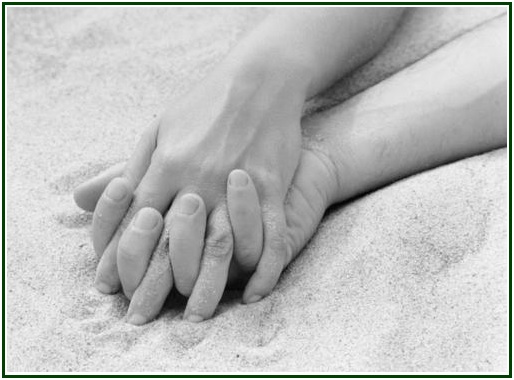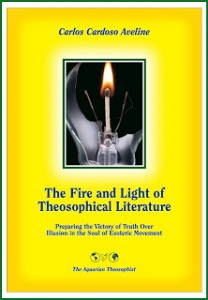
In True Affection, Unity is Complete
And Individual Autonomy Is Preserved
Erich Fromm

Love implies the use of a power that can only be developed in freedom
The desire for interpersonal fusion is the most powerful striving in man. It is the most fundamental passion, it is the force which keeps the human race together, the clan, the family, society. The failure to achieve it means insanity or destruction – self-destruction or destruction of others.
Without love, humanity could not exist for a day. Yet, if we call the achievement of interpersonal union “love”, we find ourselves in a serious difficulty. Fusion can be achieved in different ways – and the differences are not less significant than what is common to the various forms of love. Should they all be called love? Or should we reserve the word “love” only for a specific kind of union, one which has been the ideal virtue in all great humanistic religions and philosophical systems of the last four thousand years of Western and Eastern history?
As with all semantic difficulties, the answer can only be arbitrary. What matters is that we know what kind of union we are talking about when we speak of love. Do we refer to love as the mature answer to the problem of existence, or do we speak of those immature forms of love which may be called symbiotic union? In the following pages I shall call love only the former. I shall begin the discussion of “love” with the latter.
Symbiotic union has its biological pattern in the relationship between the pregnant mother and the foetus. They are two, and yet one. They live “together”, (sym-biosis), they need each other. The foetus is a part of the mother, it receives everything it needs from her; mother is its world, as it were; she feeds it, she protects it, but also her own life is enhanced by it. In the psychic symbiotic union, the two bodies are independent, but the same kind of attachment exists psychologically.
The passive form of the symbiotic union is that of submission, or if we use a clinical term, of masochism. The masochistic person escapes from the unbearable feeling of isolation and separateness by making himself part and parcel of another person who directs him, guides him, protects him; who is his life and his oxygen, as it were. The power of the one to whom one submits is inflated, may he be a person or a god; he is everything, I am nothing, except inasmuch as I am part of him. As a part, I am part of greatness, of power, of certainty. The masochistic person does not have to make decisions, does not have to take any risks; he is never alone – but he is not independent; he has no integrity; he is not yet fully born. In a religious context the object of worship is called an idol; in a secular context of a masochistic love relationship the essential mechanism, that of idolatry, is the same. The masochistic relationship can be blended with physical, sexual desire; in this case it is not only a submission in which one’s mind participates, but also one’s whole body. There can be masochistic submission to fate, to sickness, to rhythmic music, to the orgiastic state produced by drugs or under hypnotic trance – in all these instances the person renounces his integrity, makes himself the instrument of somebody or something outside of himself; he need not solve the problem of living by productive activity.
The active form of symbiotic fusion is domination or, to use the psychological term corresponding to masochism, sadism. The sadistic person wants to escape from his aloneness and his sense of imprisonment by making another person part and parcel of himself. He inflates and enhances himself by incorporating another person, who worships him.
The sadistic person is as dependent on the submissive person as the latter is on the former; neither can live without the other. The difference is only that the sadistic person commands, exploits, hurts, humiliates, and that the masochistic person is commanded, exploited, hurt, humiliated. This is a considerable difference in a realistic sense; in a deeper emotional sense, the difference is not so great as that which they both have in common: fusion without integrity. If one understands this, it is also not surprising to find that usually a person reacts in both the sadistic and the masochistic manner, usually toward different objects. Hitler reacted primarily in a sadistic fashion toward people, but masochistically toward fate, history, the “higher power” of nature. His end – suicide among general destruction – is as characteristic as was his dream of success – total domination.[1]
In contrast to symbiotic union, mature love is union under the condition of preserving one’s integrity, one’s individuality. Love is an active power in man; a power which breaks through the walls which separate man from his fellow men, which unites him with others; love makes him overcome the sense of isolation and separateness, yet it permits him to be himself, to retain his integrity. In love the paradox occurs that two beings become one and yet remain two.
If we say love is an activity, we face a difficulty which lies in the ambiguous meaning of the word “activity”. By “activity”, in modern usage of the word, is usually meant an action which brings about a change in an existing situation by means of an expenditure of energy. Thus a man is considered active if he does business, studies medicine, works on an endless belt, builds a table, or is engaged in sports. Common to all these activities is that they are directed toward an outside goal to be achieved. What is not taken into account is the motivation of activity. Take for instance a man driven to incessant work by a sense of deep insecurity and loneliness; or another one driven by ambition, or greed for money. In all these cases the person is the slave of a passion, and his activity is in reality a “passivity” because he is driven; he is the sufferer, not the “actor”. On the other hand, a man sitting quiet and contemplating, with no purpose or aim except that of experiencing himself and his oneness with the world, is considered to be “passive”, because he is not “doing” anything. In reality, this attitude of concentrated meditation is the highest activity there is, an activity of the soul, which is possible only under the condition of inner freedom and independence. One concept of activity, the modern one, refers to the use of energy for the achievement of external aims; the other concept of activity refers to the use of man’s inherent powers, regardless of whether any external change is brought about. The latter concept of activity has been formulated most clearly by Spinoza. He differentiates among the affects between active and passive affects, “actions” and “passions”. In the exercise of an active affect, man is free, he is the master of his affect; in the exercise of a passive affect, man is driven, the object of motivations of which he himself is not aware. Thus Spinoza arrives at the statement that virtue and power are one and the same.[2] Envy, jealousy, ambition, any kind of greed are passions; love is an action, the practice of a human power, which can be practiced only in freedom and never as the result of a compulsion.
Love is an activity, not a passive affect; it is a “standing in”, not a “falling for”.
NOTES:
[1] “Escape from Freedom”, E. Fromm, London, Routledge, 1942.
[2] Spinoza, “Ethics”, IV, Def. 8.
000
On the role of the esoteric movement in the ethical awakening of mankind, see the book “The Fire and Light of Theosophical Literature”, by Carlos Cardoso Aveline.

Published in 2013 by The Aquarian Theosophist, the volume has 255 pages and can be obtained through Amazon Books.
000